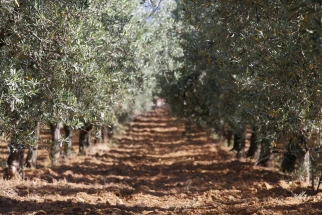
Does it get better than Carbonara?
Pasta alla Gricia
It still surprises me how relatively unknown this incredible pasta dish is. With this recipe, I find myself transported to the narrow streets of the Trastevere district in Rome. This dish embodies the spirit of Lazio, the region where Rome resides, where ingredients like pecorino and guanciale take center stage. In my opinion, this classic Roman dish stands as the pinnacle of the holy trinity of Roman recipes: Carbonara, Cacio e Pepe, and Gricia.
Order the ingredients here
Unknown, but not unloved
Pasta alla Gricia is considered the ancestor of Pasta all'Amatriciana. Before the introduction of the tomato in Italy (can you imagine Italy without tomatoes? I can't!), this simple yet delicious dish likely existed for centuries. Although the dish consists of only 5 ingredients and has no cream in the recipe (sacrilege!), the choice of ingredients and techniques makes it a recipe with many layers and addictive creaminess.
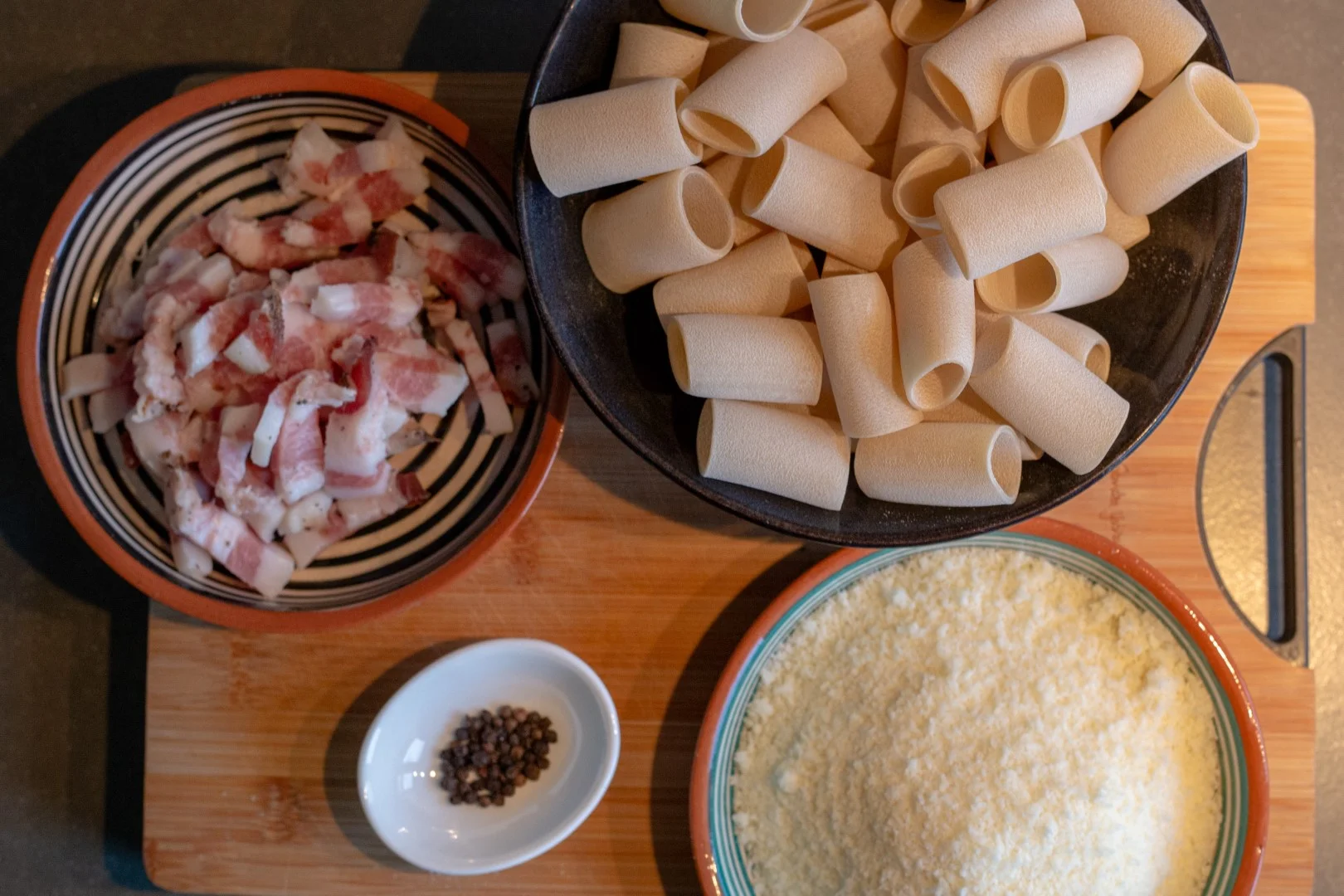
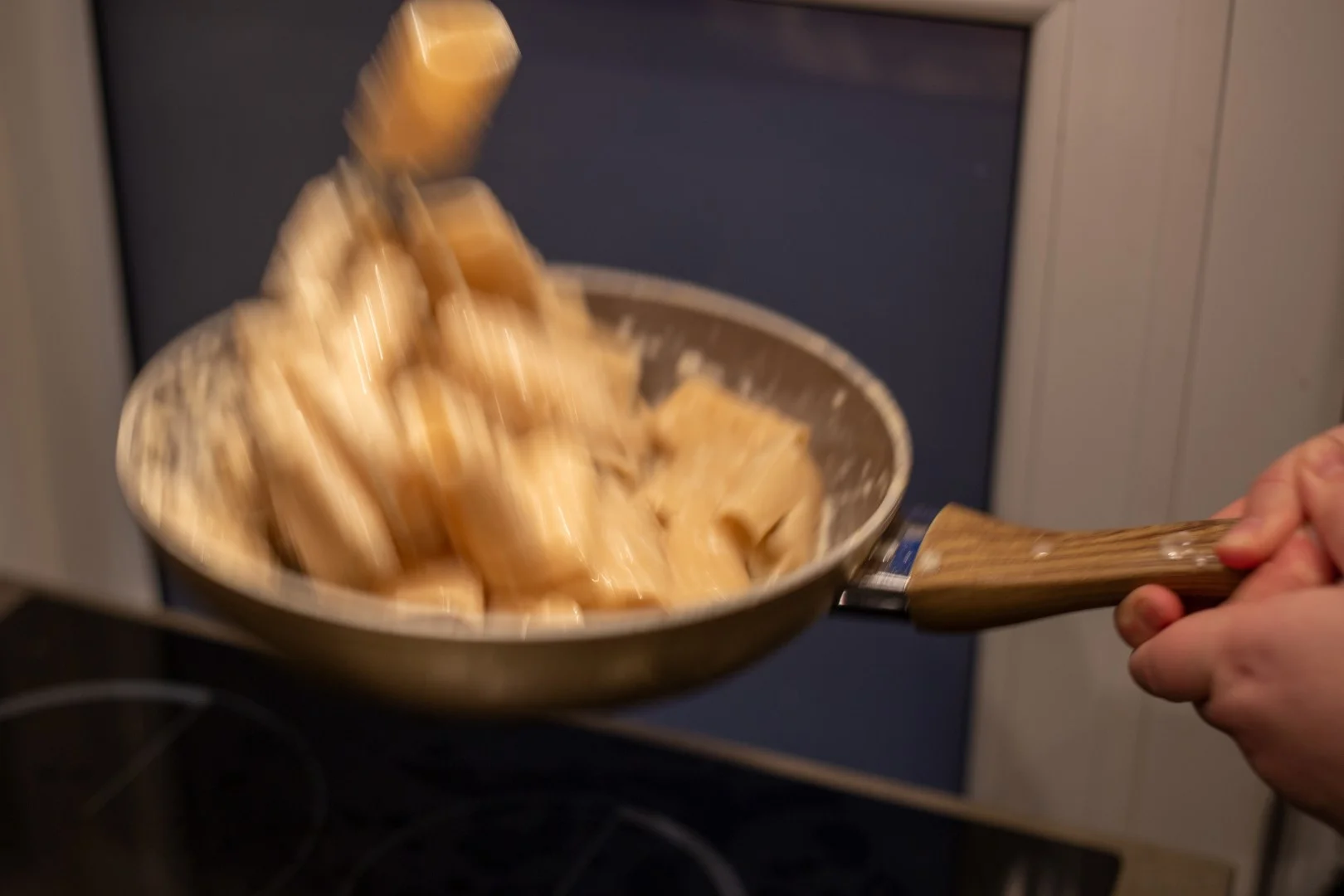
Expert level: Medium
Don't be misled by the short ingredient list. This dish is a challenge to make! And I say this with the most encouraging words. The reward is significant, and even if it doesn't turn out perfectly, you can never go wrong with pasta, cheese, pork cheek, and black pepper. Many online recipes might not lead to an optimal result, but with our tips, it should work out well. So, take a moment to read through the recipe before you start and follow the steps carefully.
Pasta choice dilemma!
Italians always have an opinion on the shape of the pasta. Strands, ridges, tunnels, or thickness – according to Italians, it is crucial to match the pasta shape to the sauce. Alla Gricia is usually eaten with Mezze Maniche (half rigatoni), Rigatoni, or Paccheri. These are all forms of tubular pasta where the guanciale can nestle inside. In this recipe, we use the wonderfully thick Paccheri from Castellano.
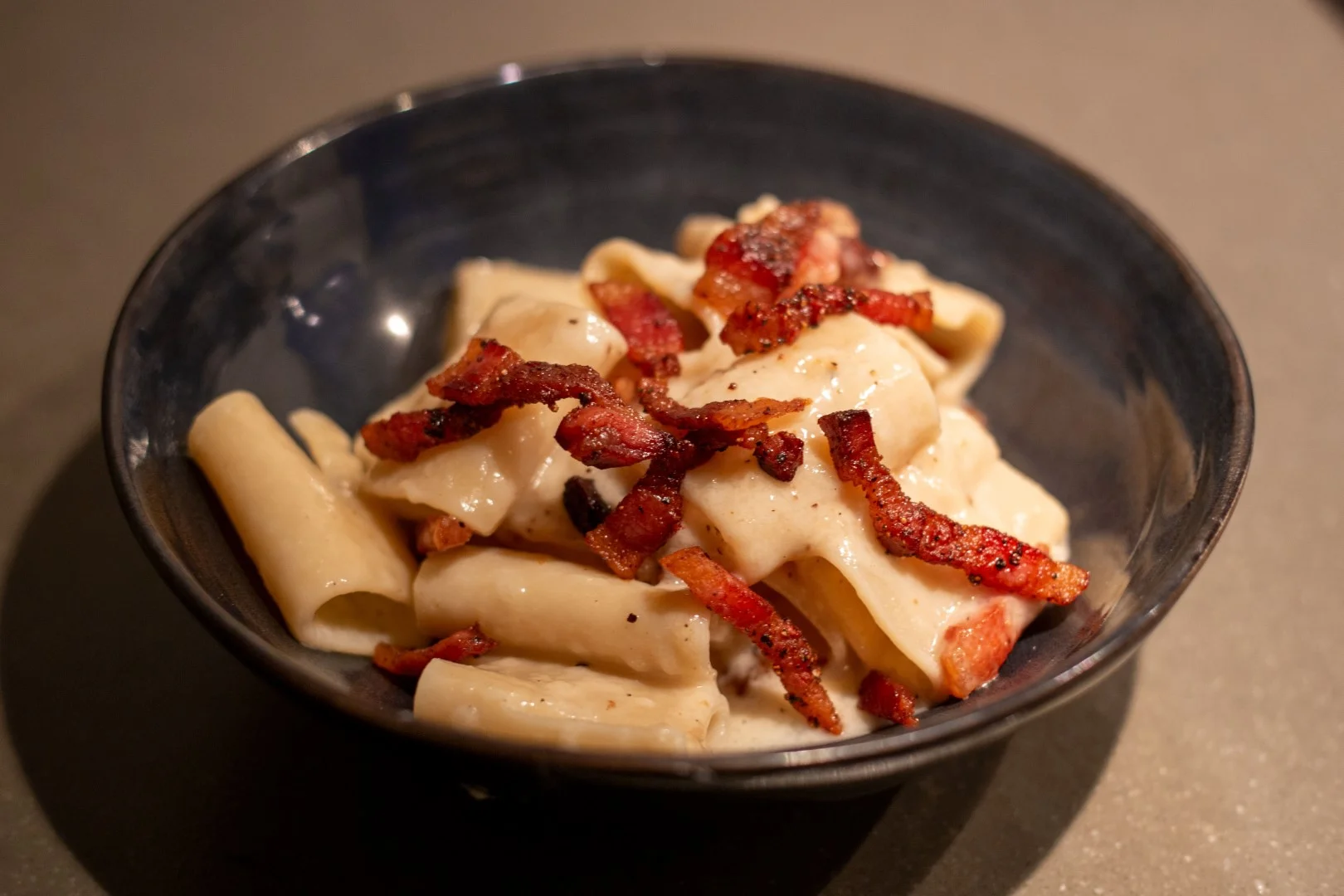
INGREDIENTS
Quantity for 2 persons
250g paccheri
150g guanciale
125g pecorino (tip: I buy mine from the cheese stand at the market; market or cheese shop varieties are usually more flavorful!)
1 teaspoon black pepper
1 tablespoon kitchen salt
REQUIRED EQUIPMENT
Not too heavy skillet
High pan for boiling pasta
Spatula
Pasta scoop
(Microblade) grater and/or an immersion blender with a chopper bowl
Kitchen paper
METHOD
Slice the guanciale into thin slices half a centimeter wide. Remove the rind (the hard part) and cut the slices into strips so that each piece has beautiful layers of fat and meat. You don't need to cut off the pepper on the outside of the guanciale; its flavor combines well with the recipe. Coarsely grind the pepper, for example, in a mortar, and add half to a dry skillet. Roast the pepper briefly, for about a minute, over medium-high heat.
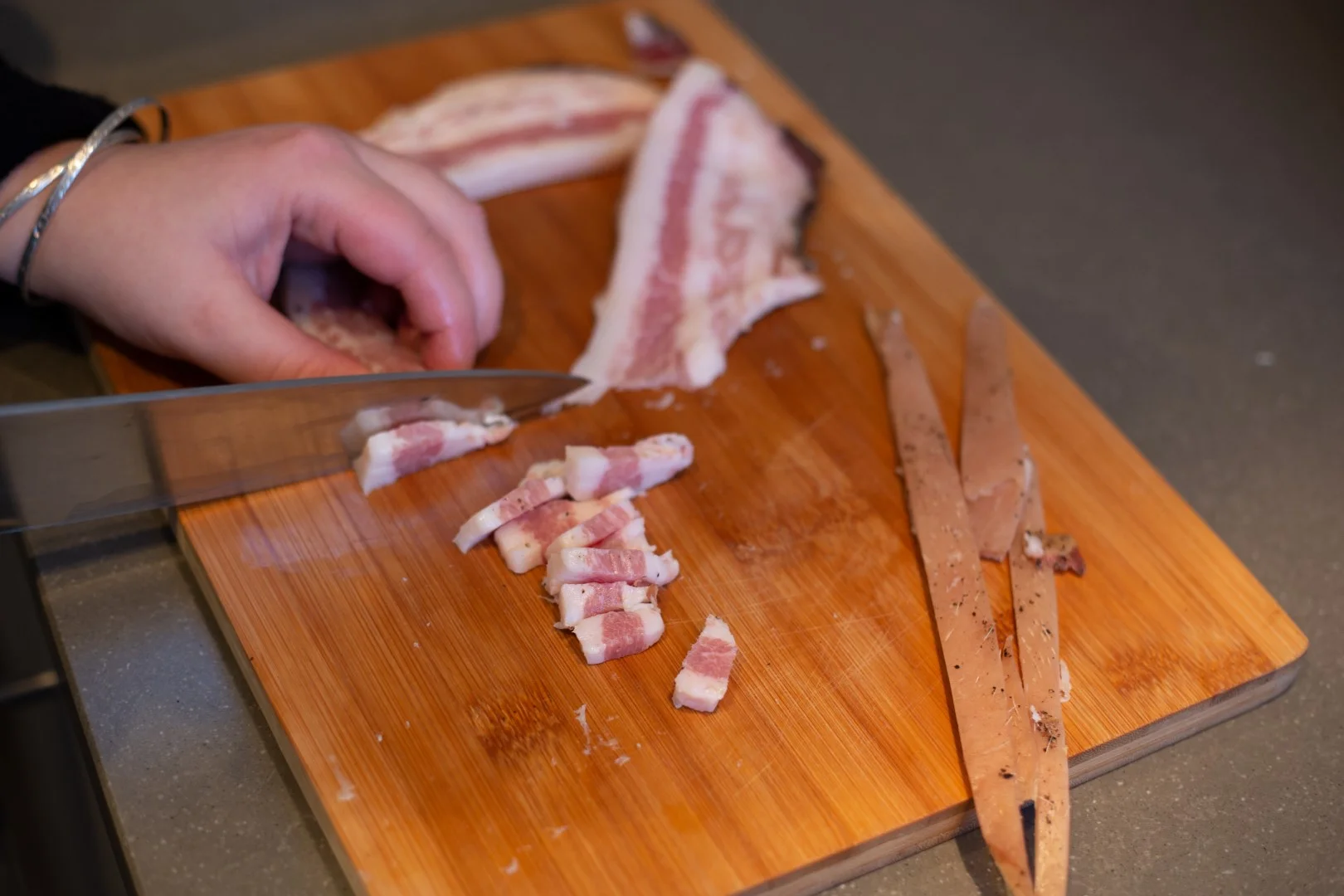
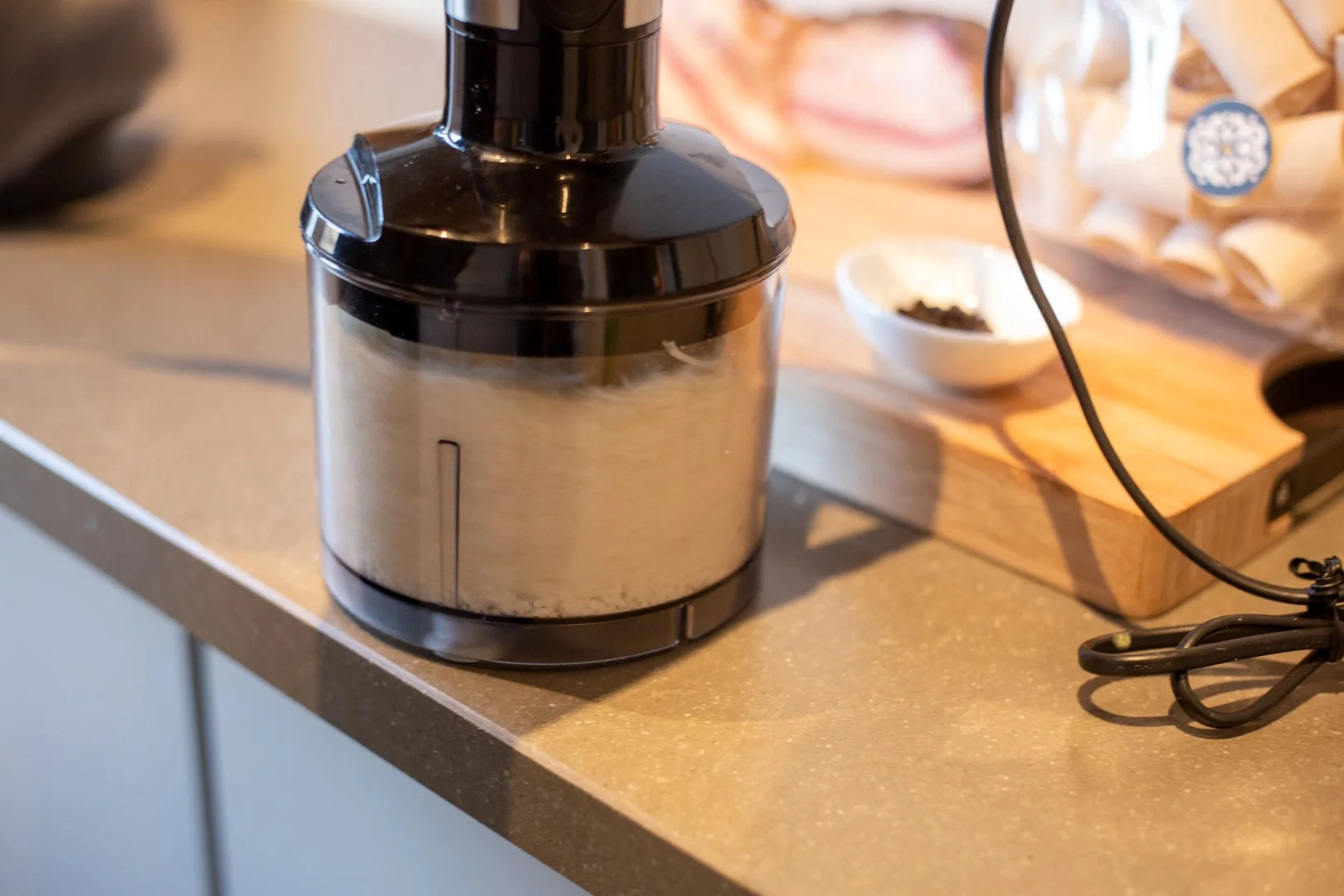
Add the guanciale to the pan. Cook it over medium-high heat until crispy (about 10 min). Meanwhile, you can grate the pecorino. It is essential to grind the pecorino as finely as possible. This will make your life easier later. I do this by first grating the pecorino with a simple grater and then pulsing it a few times in the chopper bowl of my immersion blender. You can also use a good microblade grater to grate the pecorino very finely in one go.
Put a high pan with plenty of water and a tablespoon of salt on and add the pasta when the water boils. Scoop the crispy guanciale out of the pan with a spatula and let it drain on a piece of kitchen paper.
Add a tablespoon of the guanciale fat to the pecorino. Then, add small amounts of pasta water and stir until a thick, grainy paste forms. Add the other half of the teaspoon of pepper to the pecorino paste.


Reserve a generous cup of pasta water. When the pasta is cooked al dente, transfer the pasta to the skillet with guanciale fat and pepper (leave the water in the high pan!). Stir the pasta, the accompanying pasta water, and the fat well over low heat. The pasta should look glossy. If it looks dry, you can add some pasta water.
Now comes the crucial step!
Place the skillet on the high pan and ensure that the pasta water is boiling. By mixing the pasta au bain-marie in the skillet with pecorino and pasta water, you can prevent the cheese from melting too quickly and becoming stringy. If you see signs of stringy pecorino, remove the skillet from the heat source at the first indications and let it cool briefly while stirring or tossing mixture before continuing with the recipe.
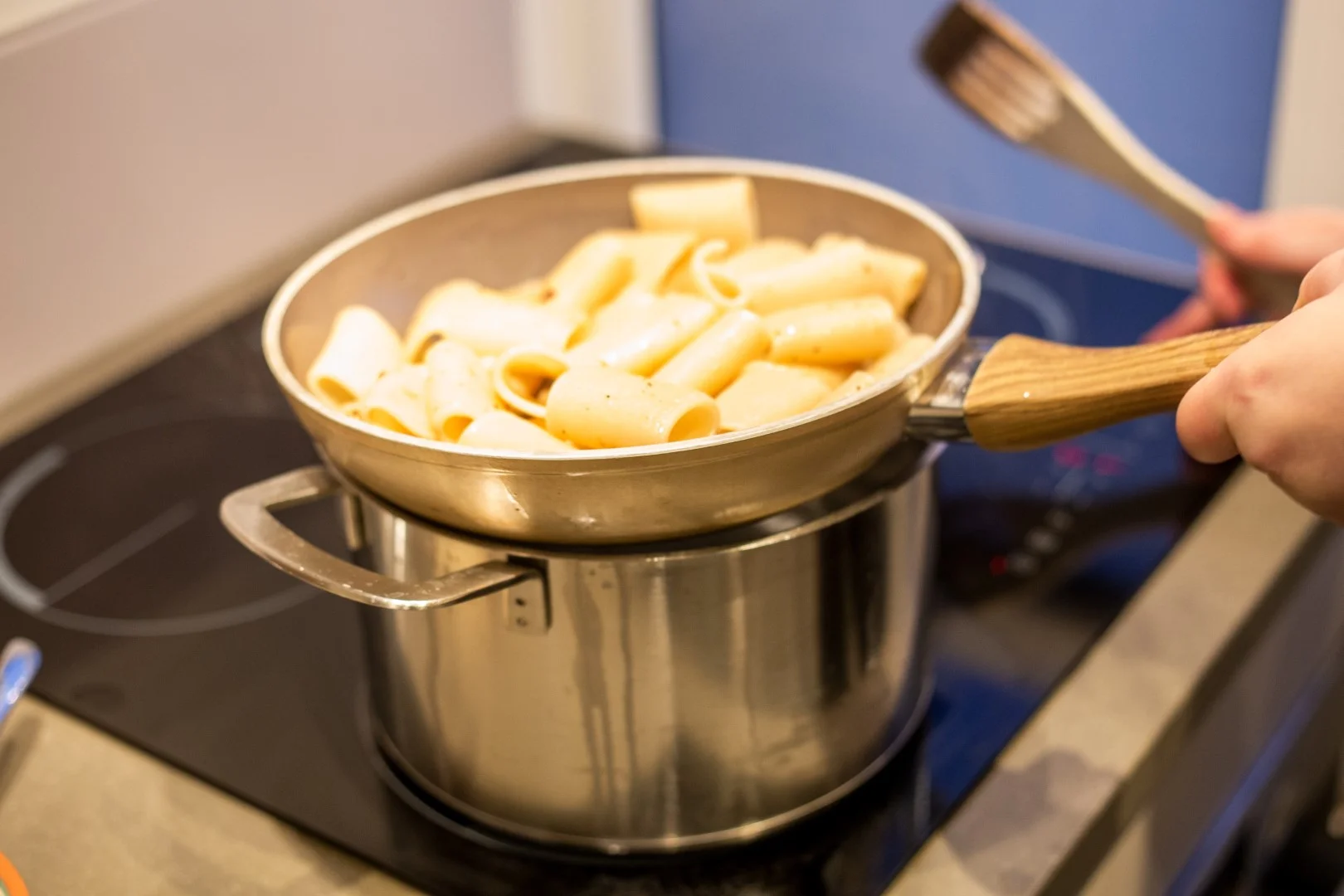
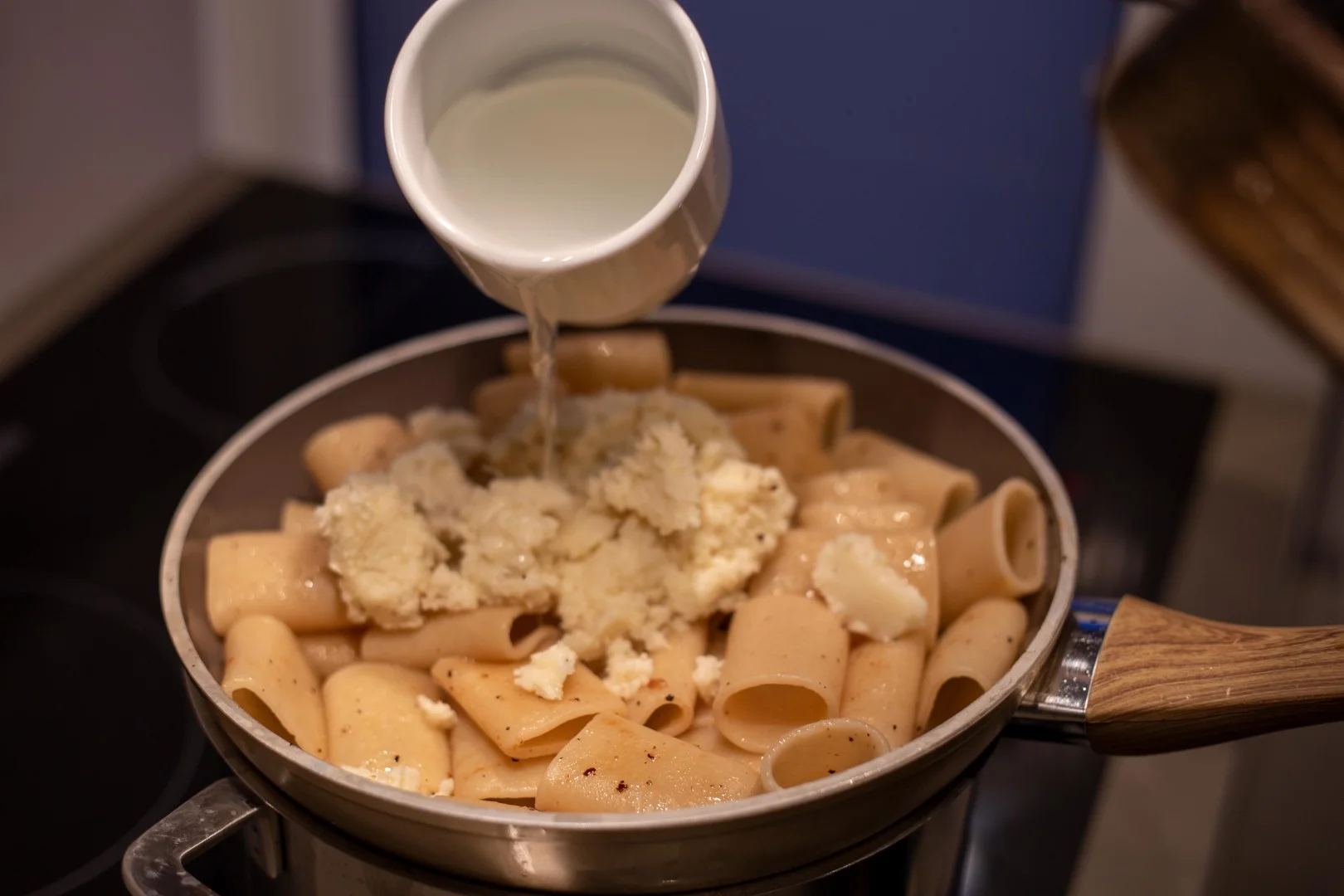
Scoop the pecorino mixture onto the pasta and gently stir. Add a little pasta water to the pasta to loosen the mixture. Keep stirring the pasta.
Add a bit more pasta water and stir. When the mixture loosens, you can toss the pasta in the skillet. This way, you won't break the pasta shape with the spatula.
Continue repeating the previous steps: adding pasta water and tossing or stirring until a smooth cheese sauce forms. Be careful! As soon as you see stringiness forming in the cheese, remove the skillet from the high pan and let the pasta cool briefly while stirring or tossing before continuing.
Add 2/3 of the crispy guanciale and toss the pasta well once more. Now, the dish is ready to be served!
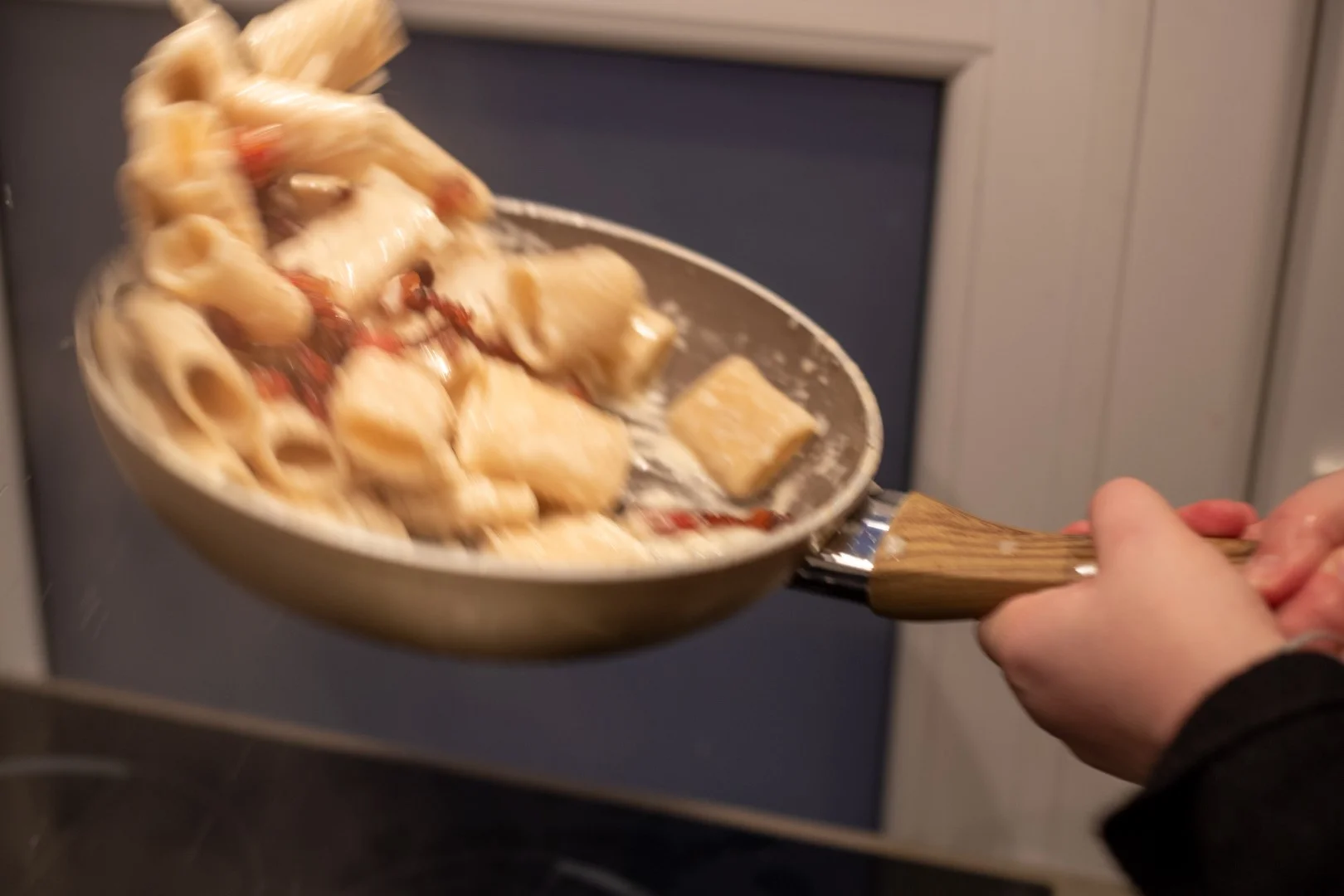
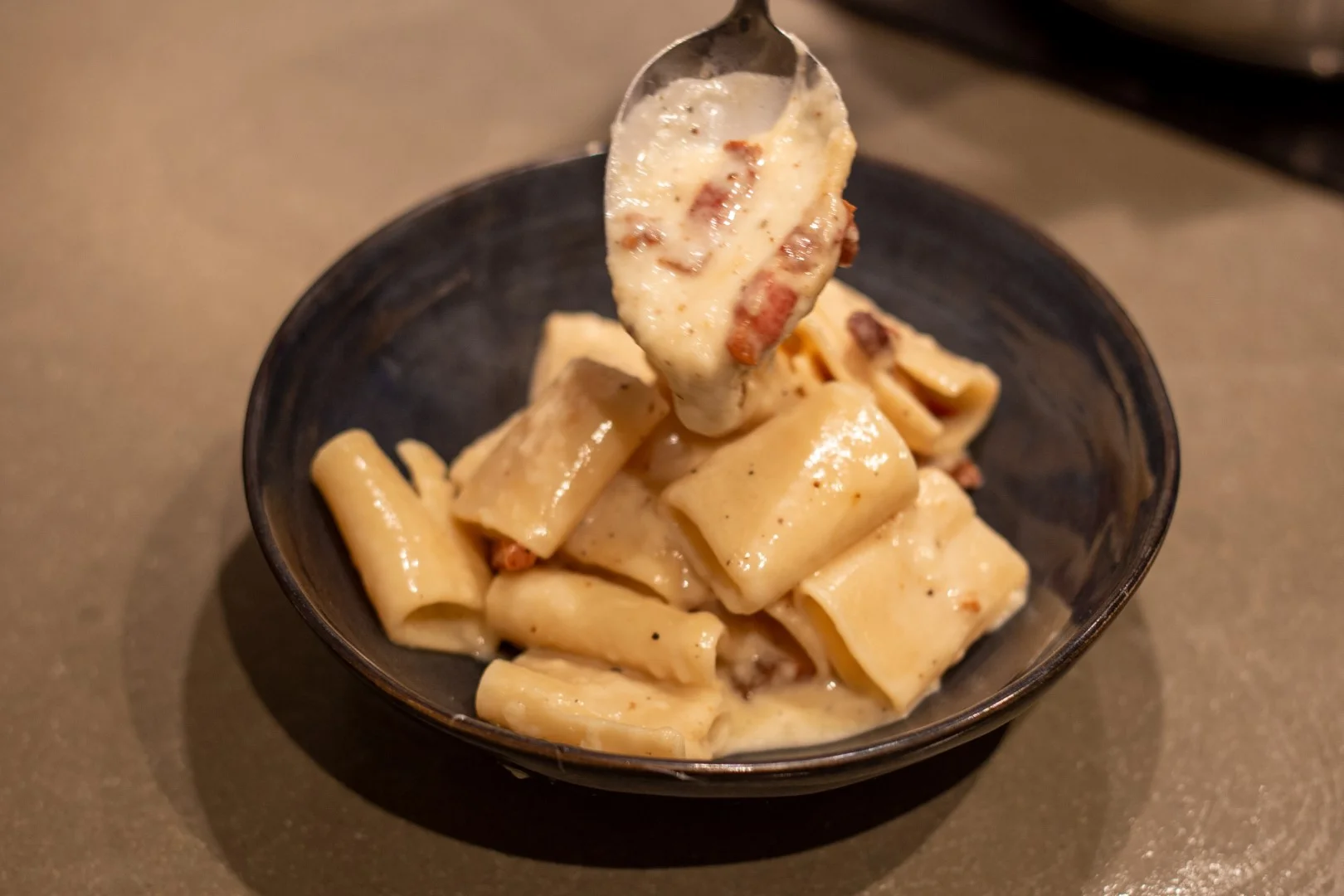
Serve the pasta with an extra spoon of sauce over the pasta; in this household, we leave no drop behind in the pan!
Finally, add the remaining crispy guanciale strips and crack a bit more black pepper on top to finish the dish.
Buon appetito!



.jpg?resolution=1024x340&type=webp&quality=90)
.png?resolution=322x0&quality=90&type=webp&background=FFFFFFFF&force_jpg_crop=1)
.jpg?resolution=322x0&quality=90&type=webp&background=FFFFFFFF&force_jpg_crop=1)
